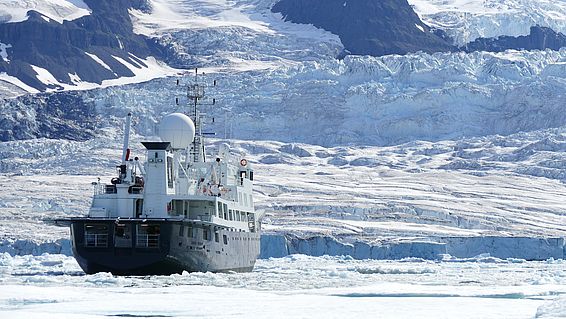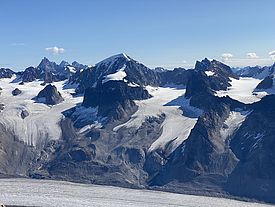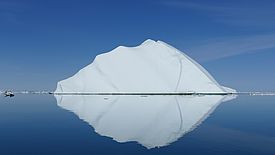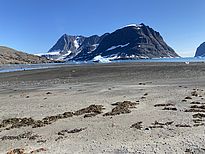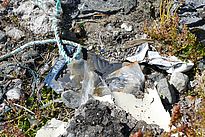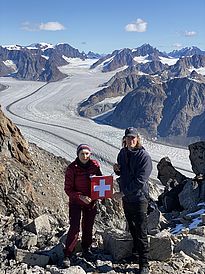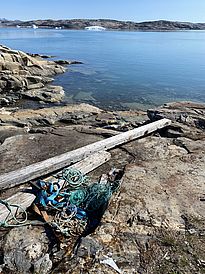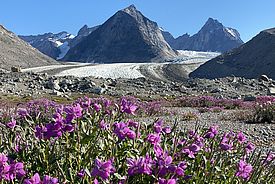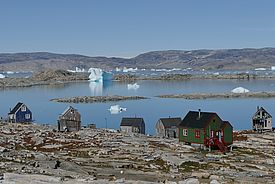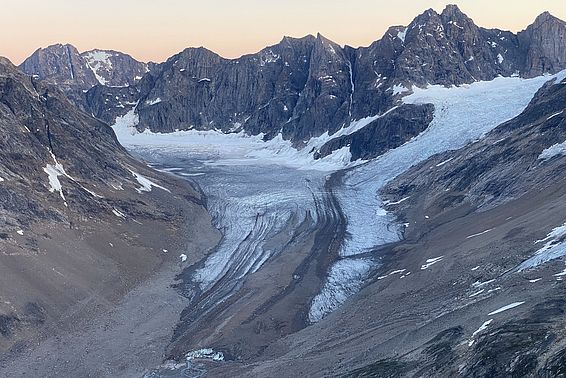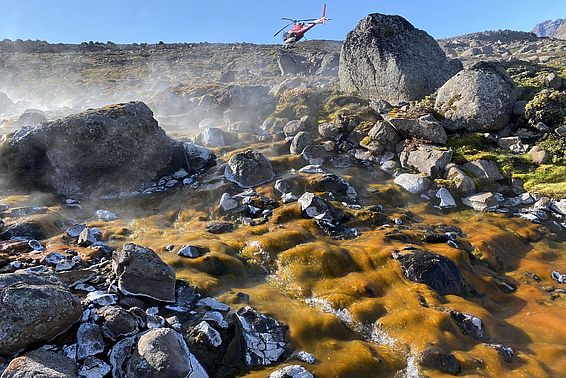Along the coast of East Greenland lie some of the most untouched fjords and glacier landscapes in the world. This is where WSL microbiologist Beat Frey travelled with the "Leister Go East 2023 Expedition" on the icebreaker Nansen Explorer to collect plastic waste and isolate unknown microbes living on it.
I love great landscapes, untouched wilderness, mountain peaks and glaciers, so I have always been fascinated by the Arctic. East Greenland is one of the most isolated areas on the island, indeed in the whole world. Only about 56,000 people live on the whole of Greenland, and about 3000 on the rugged east coast. The larger settlements are all in the west and south of the country. So remote is the east coast that the language of the inhabitants is even different from that of other Inuit in Greenland.
This year's "Leister Go East 2023 Expedition" will take thirteen Swiss and Danish researchers on board the icebreaker Nansen Explorer to this untouched landscape. My project "ArcticBioTech: Unlocking Access to Unexploited Natural Products of Arctic Microorganisms" was one of nine scientific projects on board. The luxurious research vessel is equipped with a helicopter, two inflatable boats and a small laboratory (Photo 1). Via Iceland we reach the Constable Pynt peninsula, formerly known as Scoresbysund, by private charter, and from there we reach the nearby settlement of Ittoqqortoormiit on the 70th parallel, which has only 345 inhabitants. Over the next fortnight, the Nansen Explorer will circumnavigate the southern tip of Greenland.
Plastic waste in pristine fjords ¶
We visit remote fjords with indigo blue water, huge glaciers spilling from the grey-white mountains and calving directly into the sea ice. Shimmering icebergs float majestically in the fjords (Photo 2, Photo 3).The spectacular views from the helicopter of fjords with colossal icebergs and the Greenland Ice Sheet reaching to the horizon are unforgettable (Photo 4).
My project is about plastic and plastic-eating microbes. The rubber dinghy takes me to many small, idyllic bays with sandy beaches where seals cavort. I suspect that there have never been people in most of the bays before me (Photo 5). But the worldwide plastic pollution of the oceans does not stop at the most remote regions. I collect fishing nets, textile fibres, polystyrene, strings, foils and bottles (Photo 6, Photo 7). Of the total of twelve beaches visited between 70 and 59 degrees latitude, which corresponds to a distance of about 2000 kilometres, only four bays are "clean". After all, I think to myself, there are still unpolluted places on this earth.
My search is actually for microbes like bacteria and fungi that can digest plastic. They could be a solution to the global plastic problem. Various commercial providers are already competing for the promising plastic-eating market. But most microorganisms that can break down plastic only work at temperatures above 30 degrees Celsius.That makes industrial use difficult, expensive and climate-damaging. That's why in my research group we are looking for microbes that can also digest plastic at lower temperatures.
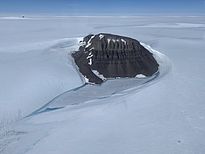
Schweizerland and Greenland's National Flower ¶
Something special for the Swiss expedition members is the visit to "Schweizerland" (photo 8). The mountain range was named in 1912 by Swiss geophysicist and Arctic explorer Alfred de Quervain after the second Swiss expedition on which he crossed the Greenland ice cap from west to east. A landscape of sublime beauty - sharply jagged peaks, ice and snow as far as the eye can see. The glacial forelands in the lowlands are dotted with Arctic plants, including local thyme, bluebell and dandelion. Greenland's pink national flower (Photo 9) also thrives here, the dwarf fireweed (Chamaenerion latifolium ) from the evening primrose family.
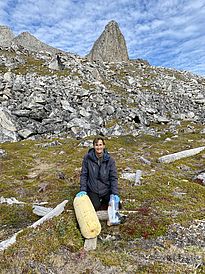
Hardly any human life ¶
On the eighth day we see traces of civilisation for the first time. Tasiilaq is a village with about 2000 inhabitants and the most populous community on the east coast. There are no roads outside, all transport is by helicopter or boat. We also visit the remote Inuit village of Isertoq, the many ghost houses testify to the fact that it has lost almost half of its population since 1990 (photo 10). The remaining 50 or so locals live mainly from fishing. For me, this is an ideal place to collect plastic waste (Photo 11).
We hardly encounter any wild animals. Some expedition members discover Arctic foxes and paw prints of polar bears. That no polar bears cross our path is both a relief and a disappointment. From the ship we observe various whales, seals and a wide variety of birds. The further south we travel, the more we are plagued by small flies and mosquitoes on land or near the shore. Working without a head mosquito net is almost unbearable (Photo 12).
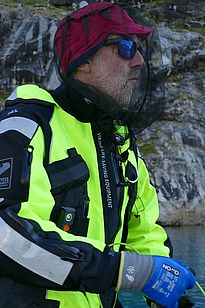
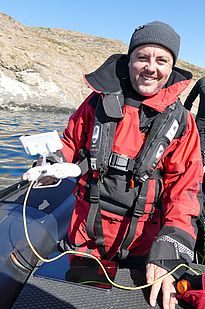
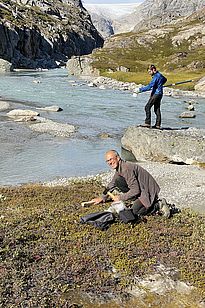
Climate change is visible ¶
The weather is surprisingly mild and sunny. Fourteen days of continuous sunshine, occasionally some fog in the morning - that is quite unusual for East Greenland, which is used to fog. In wind-protected valleys, the thermometer even rises to 19 degrees Celsius, which some of us spontaneously use to jump into the glacial melt water of a fjord. Brrr... I can't even stay in for a minute.
Climate change and the landscape changes it causes are our constant companions. Glacial moraines clearly show how climate change is affecting Greenland (Photo 13). The calving of the glaciers is impressive, when pieces of ice fall into the fjords with loud bangs, screeches and crashes.
It is particularly exciting when I get to accompany other researchers on field trips. I am helping Joe Marlow from Aarhus University, who documented the communities of macroalgae (seaweed) on the seabed with an underwater drone (Photo 14). David Janssen from EAWAG is collecting water samples from fifty different glacial streams, the chemical composition of which he will analyse later (Photo 15). He is interested in whether potentially hazardous substances enter the ocean as a result of glacier melt. Another study focuses on hot springs and the microorganisms that live in these extreme habitats (Photo 16). Thanks to the "Leister Go East 2023 Expedition" sponsored by the Leister Foundation, we are able to visit numerous scientifically unexplored locations in a short time. I am already looking forward to the research results.
Always up to date: Subscribe to the WSL Newsletter
Contact ¶
Copyright ¶
WSL and SLF provide image and sound material free of charge for use in the context of press contributions in connection with this media release. The transfer of this material to image, sound and/or video databases and the sale of the material by third parties are not permitted.
